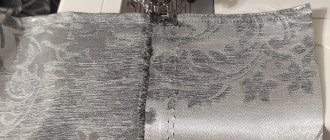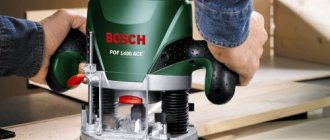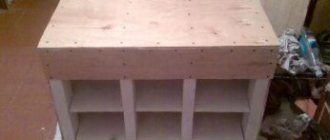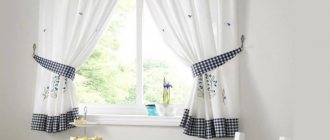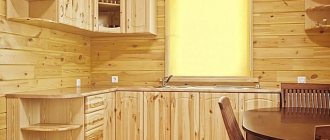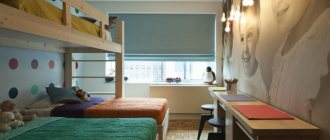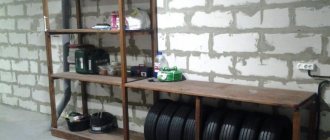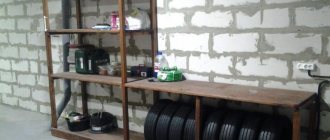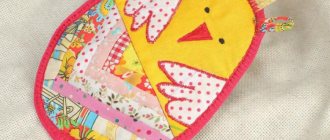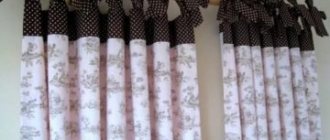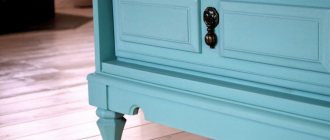Eyelets are rings of two elements for fixing part of the fabric between them. Nowadays, it is a universal device used in many areas. The ring holds its shape perfectly, so it adds strength to the fastening. For the textile industry, eyelets have become indispensable elements. Clothing designers have repeatedly used the structure of overlays to emphasize the beauty of the product. Due to the multidisciplinary use, eyelets have acquired all sorts of proportions. In some cases a flat leg is needed, and in other cases a high leg is needed. The width of the product is also very different: it is designed for both thick ropes and thin laces. In industry, high-strength linings made from modified materials are used. Eyelets are distinguished by shape, although the most widely used is the classic ring-shaped one. In some cases, the installation of eyelets is done by hand. Public master classes will help with this.
Eyelets: history of appearance
The likely timing of the grommets' appearance remains unknown. It is known that this happened a very long time ago, perhaps during the times of Ancient Greece. Scientists do not know the language in which this word appeared, much less the inventor of this device. The appearance of the grommet is associated with the use of wind power, and the term itself refers to the hole in the sail for threading the fastening threads. In ancient times, this is how the rigging of a ship was formed. Nowadays, the term has expanded its meaning. Now this is an option for strengthening the edges of holes that are less strong than the cable passing through them.
The grommet is often used as a decorative device rather than a means to strengthen the material. Examples include linings in leather products, fiberboard, and foam board. A modern grommet is a mechanism made of a washer and a shaped sleeve. In this case, the material used is mainly metal or plastic.
Curtains for the hall
The design adds coziness to the room. Made in a single image create a feeling of unity.
Decorations for the hall are designed to bring beauty and aesthetics into the house.
Look great with different interior styles.
Styles:
- minimalism;
- modern;
- Scandinavian;
- Provence;
- high tech;
- madder;
- loft;
- modern
It is important to choose the right patterns, tones, combine, match colors with objects in the room in order to put emphasis on something. Provence supports warm, pastel colors
Multi-layering of products is appropriate in country and modern.
A minimalist style is perfect for the living room. Refinement and sophistication are its basis.
The right combination of decorations in the style of the room is the right choice for decorating your home. By combining the colors of the product and the rings you can completely transform it.
Application area
The part is widely used in the production of clothing, shoes and accessories. Shoelaces for tying shoes, belt tongues, and laces for bags are threaded into it. Another area of application is parachuting, where fastening reliability plays a very important role. The awning fixing cables are also threaded into the eyelets. This use case can be seen on tourist tents, marquees, and large trucks. The device is also known to signal makers who are familiar with the arrangement of street advertising: banners with large format printing, banners, etc.
Eyelets have not bypassed the office, where sheets of paper are sealed with the help of these parts. Heavy draped curtains are also hung on these holes. At the same time, the product is still relevant for sailing ships, but now these are either private yachts or sports vessels. The device is also called a block, which is not entirely correct, because the design consists of a ring and a bushing, which is also called a block.
The grommet sleeve is also called the leg and block, the washer is called a ring, sometimes a cap.
Distinctive features
Thanks to them, the curtain can be closed quickly and easily. They are located so freely that they do not impede the movement of the canvas. They move smoothly and calmly along the cornice. They don’t sag, stay straight, and don’t form wrinkles. When moving, they do not affect it, ensuring wear resistance of any model.
A distinctive feature is that it can be attached to curtains. They look installed on special equipment. In fact, even a non-professional can secure them. The time and effort spent will not keep you waiting long. Carefully hung curtains compensate for the work.
In places where there are slits, beautiful natural folds are created along the entire length of the curtains, which allows you to create romantic comfort.
Advantages and disadvantages of application
This is a functional device with obvious advantages. Firstly, they facilitate the process of putting on, taking off, and attaching. Eyelets also diversify and decorate the design, especially since models of different shapes have appeared. However, a round structure resists deformation best. The grommet is easy to use, so any type of work can be done quickly and without complications. This is a very useful and cheap part with a large distribution, and it is also easy to manufacture. Among the shortcomings, the first thing that appears is damage to the material that is being strengthened. A careless or sudden movement of the lace can cause the eyelet to fly out, at the same time damaging the integrity of the fabric. If we talk about use on curtains and tulles, metal parts make a lot of noise. The hinge fastening method is more convenient in this regard. A common problem is color deterioration, but this depends on the specific material.
Types of grommet rings
The materials from which this type of fastening is made are varied - from metal to plastic of various shapes and colors.
Installation methods also directly depend on this. A plastic eyelet is much easier to install, but a large load on it is unacceptable! If desired, you can remove it and use it again, but the fixation of the edges of the fabric will be very poor - they crumble and become deformed, and the product looks sloppy.
Colored metal eyelets are much more reliable than plastic ones - they hold the fabric perfectly, preventing it from tearing.
Steel fasteners are considered the most reliable for fastening fabrics, leather parts, and cardboard. But before you install eyelets without tools on clothes or shoes, you will need to practice on unnecessary pieces of material. This is necessary to understand how the work is going and not to spoil the thing.
The most popular way to use eyelets is to attach them to curtains. To do this, you additionally need grommet tape, which is sold in specialized stores. It is used to glue the edge of the fabric, creating rigidity.
The mount itself can have a completely different shape - from circles to animals. The color palette is also huge.
Curtain eyelets will help to form smooth, interesting and neat folds. In order to move such a curtain on the eaves, you do not need to apply any force. The fabric does not wear out on the cornice, and, accordingly, its service life is longer.
Types and materials
The overlays come in standard round, square and various shapes. Manufacturers also produce polygon eyelets and animal figures. The variety depends on the overall design intent and purpose for a specific application. If grommets of the required shape are not found, a separate special order will be required. Based on the material used, there are metal, plastic and wooden linings. In the fashion industry, the plastic version is more often used. They are easier to attach and cheaper. Metal parts are more reliable, but make more noise. If a metal strip is threaded through the holes, it will scratch and wear out. However, for large objects like tents it is better to use metal options. Wooden overlays are useful for a certain interior, for example, simultaneously with the use of aged furniture.
Store-bought or homemade?
A wide variety of models of roller, Roman, pleated and other compactly assembled curtains on sale does not necessarily guarantee that among the entire offered range there will be a perfectly suitable product. The main characteristics of industrially produced options are:
- standardized sizes. The typical size range - length, width - is designed for the popular dimensions of metal-plastic and wooden windows;
- neutral colors. For the most part, ready-made curtains have calm, soft colors that are suitable for different interiors. Colored and printed products are more expensive;
- using non-woven or woven synthetic materials as a base fabric. Their advantages are resistance to ultraviolet radiation, ease of cleaning, durability, and strength. The main disadvantage is the synthetic nature;
- standard opening/closing mechanisms;
- standard finish or lack thereof.
For many users, all of the above features are advantages. But if you have a non-standard window size, a desire to create an individual design, or a desire for natural materials, it is better to try to order a suitable model or create roller blinds for plastic windows with your own hands.
Self-installation without special tools
In the process you will need:
- Determine the required distances on the tape for the eyelets.
- Prepare the tape.
- Install grommet parts.
To do your own fastening, it is enough to have a ruler, a hammer and some kind of stabbing device, for example, a hole punch, on hand. First, distances are calculated. There are recommendations regarding the spacing between the top edge and the center of the grommet, between the pads themselves, and also regarding the optimal diameter. In any case, the eyelet parts are placed at the same height. The next thing is to cut the ribbon, fold it with the wrong edges inward and iron it. The braid must cool before attaching to the base material. Unnecessary fragments are also removed. In the future you will need glue and an iron. Installation of the eyelets themselves begins with marking. Moreover, it is advisable to first practice on some material. Next comes the precise and meticulous process of fixing the lining in the hole. To normalize the fastening you will need a hammer.
Calculation of the distance between eyelets
Self-calculation is usually needed at home to determine the installation location on the curtains. A miscalculation will cost damaged property. First you need to determine the possible number of holes. In any case, we are talking about an even number so that the edges of the curtain look in one direction. Then, when hanging, you will need to choose the direction towards the window. The same distance is left between each eyelet - for curtains it can be 17 cm. We are talking about the distance between the centers of the holes. The minimum is 15 and the maximum is 22 cm. The minimum allowable interval to the edge of the curtain is between 5 and 7 centimeters. If you ignore this rule, there is a high probability that the overlay will not fasten. The processing should include 12 cm at the top, 5 cm for the hem at the bottom and 2 cm at the sides, as well as the internal and external diameters of the holes at 35 and 55 mm.
As a result, you need to calculate:
- Eyelet diameter.
- Spacing between eyelets.
- The distance from the outer overlays to the edge of the fabric.
Using grommet tape
Reinforcing tapes come in one- and two-layer types. They differ in the number of pasted sides. To select the ideal width, add at least 2 cm to the outer diameter. In this case, transparent tapes are chosen for thin curtains. The braid should be ironed at a minimum heating temperature. Next, we glue it in short sections with a delay of 8-12 seconds each. Tight adhesion of the grommet tape to the fabric is ensured by light pressing. There is no need to touch the material during the fastening process, otherwise the braid will lie askew. Theoretically, the sealing tape can be secured with small needles. When it comes to washing curtains with grommets, you should choose the delicate cycle at a water temperature of about 20 °C. It is not recommended to turn on the spin cycle, as it will have a bad effect on the tape. If the pads are made of plastic, you will have to refrain from using chemical cleaners.
Installation technique
First, we mark the places on the paper or on the fabric itself. Before punching holes, make sure that the holes of the pads and the hole punch meet. In any case, the diameter of the latter should be inferior to the eyelets so that they do not fall out later. Small holes, in turn, are made with an awl or a stationery knife. In any case, we treat the area under the holes with an adhesive composition even before punching. When the hole is ready, carefully insert the grommet into it, with the cap on the front side. To prevent damage, place a metal ruler or sheet of iron on the substrate. Next, we place paper with a grommet on the backing, so that the legs look up. Then we insert a flattening tool into the leg with pre-opened or cut edges. At the end, we hit the tool with a hammer, which is inserted into the leg - the grommet is secured.
How to install fasteners?
Having ironed and laid out the curtain on a flat surface, you can begin attaching the eyelets with your own hands. The outermost products should be installed first.
- Mark the center of the future fastener with a pencil or chalk according to the calculation (in our example, set aside 5 cm from the side edge).
- Place the grommet and outline the inner diameter.
- Using sharp scissors or a special punch, make a hole slightly larger than the marked circle. You should cut carefully so that the edges do not fray.
- Place one part of the eyelet on the bottom (under the fabric), and the second on top.
- Gently press the fastener until it snaps into place (characteristic sound).
Install the fasteners on the other side in the same way. Next, adhering to the calculated distances, mark the centers of the remaining fasteners and outline the internal diameters. It is also important that all eyelets are at the same height from the edge of the curtain. Cut holes and secure the rest of the products. The work is finished, you can hang the finished curtain on the cornice.
Installation using specialized tools
You will need tongs and a press. In addition, the construction supply store will have a set of punches - this will partially solve the problem of creating large holes. If eyelets are needed to support heavy curtains, then the openings are made as wide as possible. The sizes of the linings and the diameter of the hole are marked. For example, the length of the grommet element bushing directly depends on the thickness of the material being processed. If we are talking about weighty textured draperies, you will need a grommet with the largest leg. The size of the lining on the marking is indicated by the letter L, and the diameter of the sleeve and, accordingly, the hole - by the letter D. The smallest eyelets are attached using balls or rounded steel rods. The ends of the rods can be processed on a lathe. Metal axles with a tapered end and a diameter larger than the lining are also suitable.
List of potentially necessary tools and devices:
- bearing balls;
- rods;
- forceps;
- rubber mat;
- stationery knife;
- marker;
- sheet of iron;
- ruler;
- hammer.
Installation of metal products
When using metal products, you must first flare the sleeve, and then proceed directly to installation. For these purposes, metal or wooden bases are used. If flaring tools are not available, round or cone-shaped objects can be used. The diameter should match the eyelets themselves. You can use a bolt with a rounded head.
It must be placed on the product and flared using a hammer with flair, that is, the impact force must be comparable to the malleability of the metal. When the process is halfway done, the bolt can be put aside and strikes directly on the sleeve. The product fixed in this way should not only hold the ring, but also securely hold the fabric with its edges.
Tips for installing grommets on a canvas awning
For awnings, linings are selected from a high-strength plasticized mixture. The surface of the parts must be nickel-plated or galvanized. In this case, installation can be carried out using professional equipment. The unit for welding two parts of the lining is best suited for these purposes. The machine guarantees fast and high-quality soldering. For installation on a tarpaulin awning, flaring and a punch are used. A separate roller is provided for each grommet option. But besides them, you can use a compact hand press. In this case, the need for impact force will disappear, and ordinary compression will suffice. In addition, the press comes complete with attachments and settings for the type and size of eyelet parts. The implementation of this installation method does not require physical strength or skills. The listed fixation methods can be used when installing street advertising banners.
How to Prepare a Tarp
First, select an awning of the required thickness and size. Next, we prepare the tools: a hammer, a punch, a marker, a pencil, a ruler - the devices necessary for punching holes. Using a ruler and pencil, we determine and immediately mark the places where we will subsequently install the eyelets. The size of the marks should be equal to the diameter of the ring. We apply everything evenly, making sure that the distances between adjacent elements correspond to the same value. After this, we take a hammer with a punch and begin to form openings in the tarpaulin according to the drawn marks. You should immediately decide on the distance from the edges, as well as the height of the placement of the overlays, so as not to cut out unnecessary holes. Before breaking through, we fold the awning in half for greater reliability of future fastening. Before creating the openings, we place a wooden board under the tarpaulin to absorb the impact of the hammer on the punch.
If the material is thin, it is better to use brass or plastic washers.
DIY sewing
Ready-made models are sold, but you can sew them yourself. Sewing will not take much time and will not be a huge task.
Step-by-step instruction
When purchasing rings, you need to focus on the color of the fabric. If you select decorative elements, for example, tiebacks, then you need to focus on them. In special kits to complete the installation on the cornice, there are not only eyelets, but also clips, tiebacks, and pins.
You need to choose natural materials, high quality and durable.
Installation will not be difficult. You can also string them onto your own curtains. Count a certain number of rings. Compare with the width of the material. The number is divided by the length of the canvas. The distance is from 15 to 25 cm.
Important! Sealing tape must be used when installing elements. Fabrics for sewing:
Fabrics for sewing:
- thick curtains;
- elegant;
- tulle;
- velvet, velor, wool.
Thick curtain fabric is most often selected for the living room or bedroom. Velvet and velor are combined with the style of the room. Light linen fabrics are more suitable for the kitchen. They do not absorb odors and do not fade in the sun.
When choosing fabric, you don’t need to skimp on the material. Take this into account for the top allowance when hemming. Leave a margin at the bottom, as it should not hang down to the floor.
Important! Good tools make for a quality installation
The style, color, density or lightness of the fabric is selected at your discretion
But it is important that they fit harmoniously into the design of the room
Tools for work
- Hole puncher for creating holes.
- Small tailor's scissors.
- Forceps.
- Chalk or just soap.
- Centimeter.
- Iron or press.
- Sewing machine.
- Grommet tape.
Installation:
- It is necessary to process the side sections of the product.
- Marking is carried out along the width of the canvas. Keep in mind that you need to leave 2 cm from the edge and a little more for the seam allowance.
- The tape is ironed on the reverse side. Use gauze; delicate items require careful handling.
- Folding the seam allowance, sew on a sewing machine.
- Punching a hole in the fabric is done with scissors or punches.
- The excess material is cut out. Using the previously made marks, a crosswise cut is made.
- The diameter of the element should correspond to the cut made in the fabric.
- Eyelets are inserted. There is one piece on the wrong side, and a second piece on top. Excess threads are removed with scissors and protruding material is tucked in. The eyelets are pressed on both sides, and so on every detail.
The methods of attaching to the cornice are not limited to this. They hang it on a bar, use special clamps, and string it on a cornice or rope.
Eyelets combine practicality, ease of use, reliable design, and ensure the durability of the product. Suitable for all rooms, they are wear-resistant. Feel free to choose and combine curtains. Installation does not take much time. At the same time, the resulting design will delight you for many years.
Sometimes even changing one detail can change a room beyond recognition, and beautiful eyelet curtains may well be that.
When to buy
Tabletop manual mechanical mini press
But when you under no circumstances need to make a press yourself, it is when you are engaged in precision mechanics, optics, or jewelry work. All homemade presses are not particularly accurate: you can’t make them better at home and/or homemade conditions. And an inaccurate mini-press can break or irreparably damage a tiny irreplaceable part, crack a lens, a gemstone, etc. In these cases, it is still better to purchase a desktop mini-press; Of these, manual mechanical rack and pinion (see figure on the right) are widely available and their prices are reasonable.
Press: homemade for metal work and household needs - options, drawings, manufacturing
Production is unthinkable without pressing operations, and modern production even more so: the processing of metals and materials in general by cutting produces waste, which ultimately has a significant impact on the environment and economy. In a home workshop, in a garage, it is also difficult for an individual entrepreneur working in metal to do without stamping, forging, straightening, bending, molding (flattening), pressing and pressing out blanks and parts, but the choice of presses for individual use is not wide, but the prices are scary. A press is no less necessary just on the farm - for squeezing juice, oil, baling hay. Virgin juice/oil can only be obtained from a special press (see below); You need to press the grapes into the wine especially carefully and with skill. And with the choice of ready-made presses and their prices, the situation is similar to the previous one. Finally, rising energy prices are forcing many homeowners to think about switching their autonomous heating to waste (alternative) fuel, or at least how to make fuel pellets or briquettes from existing household waste (straw, husks, husks, sawdust, shavings); This also requires a special press. This publication is devoted to how to make a press with your own hands for these and some other purposes (also see below).
Homemade presses for various purposes
Which one should I do?
Pressure pressing allows you to perform almost all pressing operations necessary in everyday life. Homemade presses are most often made energy-autonomous, i.e. without a separate drive, working fluid reservoirs, pumping stations, etc. The choice of one or another design of the press is ultimately determined by its purpose and working force.
It is easiest to use a car jack as a power unit built into the press - it develops a force of up to 100 tf, and jacks for 10 tf are commonly used. The only operation that a jack press cannot handle is molding (flattening) the ends of rods during artistic cold forging.
The most commonly used jack is a hydraulic bottle jack (but see also below). In this case, a hydraulic press can be made according to one of the traces. frame design diagrams (see figure):
Basic design diagrams of homemade presses
- Pos. A – the jack is turned upside down, tightly fixed to the fixed upper cross-beam, and a punch is attached to the head of the working rod of the jack. This is the simplest and at the same time reliable and vibration-resistant design (see below for the role of vibrations in the operation of the press). Disadvantages - if the jack is needed for its intended purpose, dismantling it is quite difficult and time consuming, and swinging the lever of a jack hanging upside down is not very handy.
- Pos. B – diagram with a movable table. Structurally more difficult, because a movable traverse is added - a table. They pump the jack as always, it’s easy to remove it, because... it may not be secured at all. Disadvantages – worst vibration resistance; in addition, the technology of most pressing operations is designed for the punch to press on the workpiece or part from above, but if it’s the other way around, it’s difficult and may not work out at all. But for repair and/or mechanical assembly work, this is the best option: if you need to squeeze out a tightly rusted shaft from a pulley or bearing or, conversely, press them onto the shaft, then its (the shaft’s) length is limited only by the height of the ceiling in the workshop. In general, a hydraulic press with a moving table made from a jack is the best option for a garage or service station.
- Pos. B – with a power unit on a movable cross-beam. Structurally the most complex, but vibration-resistant, strong and durable, because the load on the weakest link - the movable traverse - is not point-based, but actually dispersed. The jack may also not be secured, but if it turns out and crashes, the consequences will be worse than if it falls off the base plate. The disadvantage is that pumping a jack that slowly creeps down is not very convenient.
Note: the base plate is a heavy, bulky, material-intensive thing. Placing a press on a slab in a workshop or garage is not always possible. Therefore, the frame of homemade presses is most often placed not on a slab, but on a lower fixed cross-beam, structurally similar to the upper one (see below). This reduces the vibration resistance of the press by approx. twice, but for amateur conditions this is acceptable.
A manually driven screw press (pos. D) allows you to create a force of up to a maximum of 1.5-2.5 tf. In working with metal it is used when this is sufficient, in the following. cases (see also video):
When pressing force less than the specified values is sufficient:
